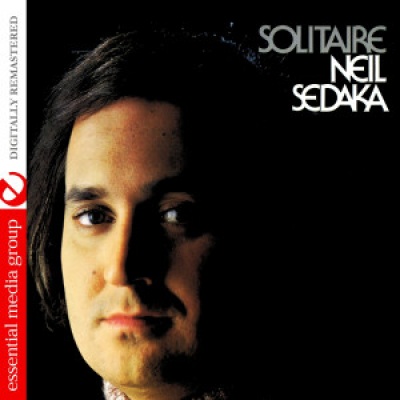
Solitaire (Digitally Remastered)
by Joe ViglioneRecorded at Manchester, England's Strawberry Studios with 10cc's Eric Stewart as engineer and the other three members of that band backing up Neil Sedaka, this project features lyricists Roger Atkins and Phil Cody collaborating with the singer, a big change for the man who worked so long and so well with Howard Greenfield. "That's When the Music Takes Me" and the title track, "Solitaire," would be lifted for the 1975 disc Sedaka's Back, finding success after being repackaged and re-promoted. "That's When the Music Takes Me" became a Top 30 hit three years after it was first released on this album, the third chart song within a year during Sedaka's comeback. Released in the U.S. after the brilliant Emergence LP, this album is produced, arranged, and composed by Sedaka, and it sounds as solid as the early solo albums from the Beatles. Keep in mind what was going on at the time -- Sedaka's friend Carole King was reshaping pop radio with Tapestry. You can hear the influence of "That's When the Music Takes Me" on her hit from January 1975, "Nightingale," a tune that reached the Top Ten seven months before Sedaka's song charted. "Don't Let It Mess Your Mind" would show up on Yvonne Elliman's 1978 Night Flight album, with a five-and-a-half-minute version added as a bonus track on the extended Steppin' Out album re-released by Varese Sarabande in 1998. Note how the keys in this song sound somewhat like Elton John's "Madman Across the Water." Also note that when John split from Bernie Taupin he put out A Single Man, while Sedaka's brief time away from Howard Greenfield is called Solitaire. Hardly coincidental. If the general public wasn't hearing this music immediately, other recording artists were. Is it also just a coincidence that Sedaka sings "Better Days Are Coming" here, only to have Melissa Manchester put out Better Days & Happy Endings when this music was finally hitting in 1975, three years after the fact? It's kind of a shame that Solitaire was desecrated somewhat by the lending of two tracks to the Sedaka's Back disc. It's also strange that Don Kirshner couldn't ride the Tapestry wave Lou Adler was surfing and surging on. Both entrepreneurs were backing Brill Building greats. The Native American influences on "Dimbo Man" work like an uptempo "Neanderthal Man," the 1970 hit from the musicians on this record when they called themselves Hotlegs. "Trying to Say Goodbye" is as good or better than most of what was released on Sedaka's Back. This is Neil Sedaka in control, in a very pure form. The albums he co-produced with engineer Robert Appere in his second coming had their moments as well, but they also tried too hard. There is no trying here, just perfect execution.
